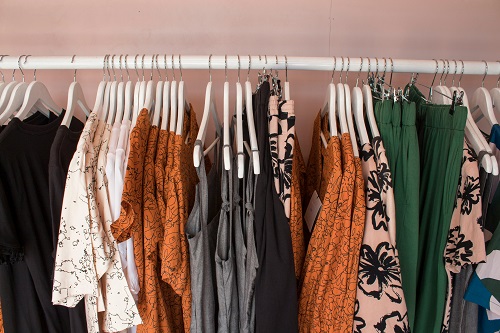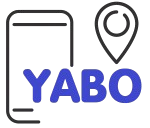Boutique Shop Business

Business Idea: Boutique Shop
Type of Boutique: Trading and services
Key Products for Sale:
Offer a variety of clothing items such as dresses, tops, bottoms, and outerwear. Additionally, include accessories like jewelry, handbags, scarves, and hats to complement the outfits. Consider adding unique items such as handmade crafts or locally sourced goods to add a distinctive touch to your boutique.
Store Atmosphere: Create a welcoming and visually appealing atmosphere in your boutique. Use stylish decor, good lighting, and comfortable fitting rooms to enhance the shopping experience for customers. Play soft background music to create a relaxing ambiance.
Technology Considerations:
Implement a simple point-of-sale system to process transactions efficiently. Consider setting up an online store or using social media platforms to showcase your products and engage with customers. Utilize email marketing to send out promotions and updates to your customer base.
Market for the Products:
Identify your target market based on factors like age, gender, and lifestyle preferences. Consider catering to local residents, tourists, or specific communities within your area. Participate in local events, markets, and fashion shows to promote your boutique and attract potential customers.
Key Inputs into the Business:
Ensure you have a reliable supply chain for sourcing products. Establish relationships with wholesalers, designers, or local artisans to acquire inventory for your boutique. Invest in quality display fixtures and hangers to showcase your merchandise effectively.
Quality Considerations:
Focus on offering high-quality products that align with your boutique’s brand and image. Pay attention to details such as fabric quality, stitching, and finishing to ensure customer satisfaction. Provide excellent customer service to build trust and loyalty among your clientele.
Cost of Investment:
- Inventory Purchases:
Clothing items (dresses, tops, bottoms, outerwear): Estimate spending between KES 50,000 to KES 200,000, depending on the size and variety of your inventory.
Accessories (jewelry, handbags, scarves, hats): Budget approximately KES 20,000 to KES 100,000, depending on the selection and quality of items.
Unique or specialty items (handmade crafts, locally sourced goods): Allocate around KES 10,000 to KES 50,000, depending on the type and quantity of products. - Store Setup and Decor:
Rent and deposit for the store space: Costs vary widely depending on location, size, and lease terms. Estimate between KES 10,000 to KES 50,000 per month for rent.
Store fixtures (racks, shelves, display tables): Budget around KES 10,000 to KES 50,000 for basic fixtures, depending on the size of your store and the quality of the fixtures.
Decor and ambiance (lighting, decor items, fitting rooms): Allocate approximately KES 5,000 to KES 20,000 for creating an inviting atmosphere in your boutique.
- Technology and Equipment:
Point-of-sale system: Estimate spending between KES 5,000 to KES 20,000 for a basic POS system, including hardware and software.
Computer/laptop: Budget around KES 10,000 to KES 30,000 for a reliable computer for administrative tasks and managing online operations.
Printer/scanner: Allocate approximately KES 5,000 to KES 20,000 for essential office equipment.
Security system (optional but recommended): Budget around KES 10,000 to KES 30,000 for a basic security system to protect your inventory and store premises.
- Marketing and Advertising:
Business cards and flyers: Estimate spending between KES 1,000 to KES 5,000 for printing promotional materials.
Social media promotion: Budget around KES 2,000 to KES 10,000 for sponsored posts and advertising campaigns on platforms like Facebook and Instagram.
Website development (if applicable): Allocate approximately KES 10,000 to KES 40,000 for creating a professional website for your boutique.
Grand opening event (optional): Budget around KES 10,000 to KES 40,000 for hosting a grand opening event to attract customers and generate buzz.
- Initial Operating Expenses:
Utilities (electricity, water, internet): Estimate monthly expenses between KES 5,000 to KES 20,000, depending on usage and location.
Insurance (property insurance, liability insurance): Budget approximately KES 10,000 to KES 40,000 annually for insurance coverage.
Miscellaneous expenses (cleaning supplies, office supplies): Allocate around KES 2,000 to KES 10,000 for miscellaneous operating costs.
- Legal and Regulatory Fees:
Business registration and permits: Estimate spending between KES 1,000 to KES 5,000 for registering your business and obtaining necessary permits.
Sales tax permits: Budget approximately KES 500 to KES 2,000 for obtaining sales tax permits.
Zoning approvals: Costs vary depending on local regulations and zoning requirements. Allocate around KES 1,000 to KES 5,000 for zoning approvals.
- Employee Costs (if hiring staff):
Employee salaries/wages: The budget varies depending on the number of employees, their roles, and local labor laws. Estimate monthly payroll expenses between KES 20,000 to KES 100,000.
Total Estimated Cost Range:
Low End: KES 127,500 (approximate)
High End: KES 707,000 (approximate)
These cost estimates serve as a general guideline and may vary based on location, market conditions, and individual business preferences. It’s essential to conduct thorough research and budgeting to determine the specific costs associated with setting up your boutique shop.
Required Operational Infrastructure:
Set up storage space for inventory management and organization. Allocate space for administrative tasks such as accounting, customer service, and order fulfillment. Hire staff members as needed to assist with daily operations.
Most Suitable or Viable Location:
Choose a location with high foot traffic and visibility to attract customers. Consider areas near shopping centers, tourist attractions, or trendy neighborhoods frequented by your target market. Ensure the space is accessible and offers parking options for convenience.
Potential Sources of Investment Capital:
Explore funding options such as personal savings, small business loans, or investor partnerships. Consider crowdfunding campaigns or seeking support from friends and family to raise capital for your boutique.
Requirements for Effective Management:
Implement efficient inventory management systems to track stock levels and reorder merchandise as needed. Train staff members to provide personalized assistance to customers and uphold the boutique’s brand standards. Monitor sales trends and customer feedback to make informed business decisions.
Role of Mobile Phone and ICT in the Business:
Utilize mobile devices for inventory management, sales tracking, and customer communication. Maintain an active presence on social media platforms to showcase new arrivals, promotions, and special events. Use email or text message alerts to notify customers about upcoming sales or exclusive offers.
Statutory Regulations and Licenses:
Ensure compliance with local regulations and obtain the necessary licenses and permits to operate your boutique legally. This may include business registration, sales tax permits, and zoning approvals. Adhere to consumer protection laws and regulations regarding product safety and labeling.
Pricing:
Set competitive pricing for your products based on factors such as quality, uniqueness, and market demand. Consider offering promotions, discounts, or loyalty programs to attract customers and encourage repeat business. Monitor pricing trends in the industry and adjust your prices accordingly to remain competitive.
Profitability:
Monitor your boutique’s financial performance regularly to assess profitability and identify areas for improvement. Analyze sales data, expenses, and customer feedback to make informed decisions about pricing, inventory management, and marketing strategies. Aim to achieve sustainable profitability by maintaining a loyal customer base and adapting to market trends.
Next Steps to Take:
Develop a detailed business plan outlining your boutique’s goals, target market, competitive analysis, and financial projections.
Secure funding and acquire the necessary resources to launch your boutique successfully. Execute your marketing and branding strategies to attract customers and establish your boutique’s presence in the market.
Continuously evaluate and adjust your business strategies to adapt to changing market conditions and ensure long-term success.

